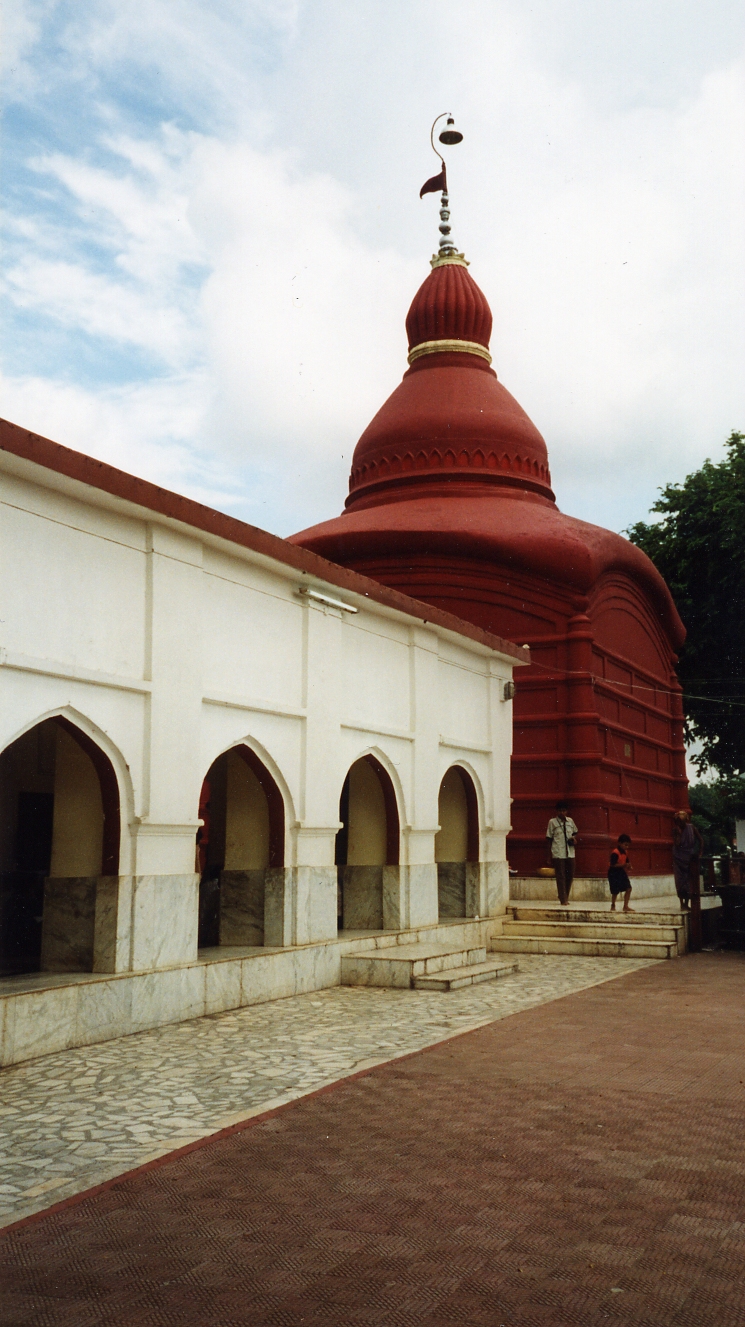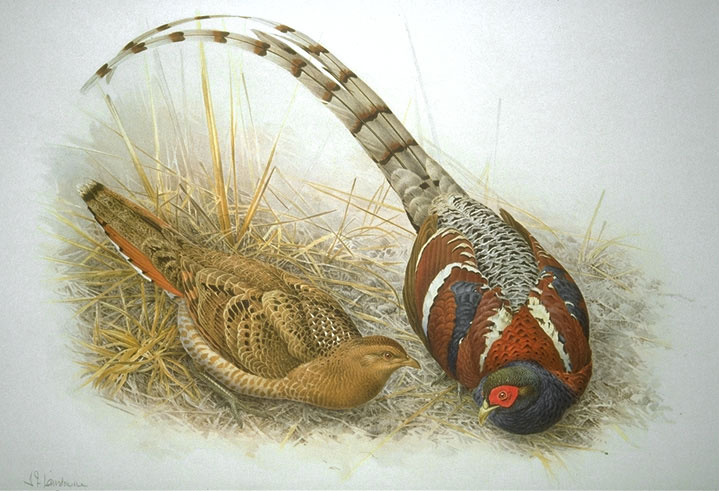|
Hill Tribes Of Northeast India
The hill tribes of Northeast India are hill people, mostly classified as Scheduled Tribes (STs), who live in the Northeast India region. This region has the largest proportion of scheduled tribes in the country. Northeast India comprises the former British province of Assam and part or all of the former princely states of Manipur, Tripura and Sikkim. There are areas of plains in the modern State of Assam, but otherwise the region is mostly hilly or mountainous. The hills have long been populated with Tibeto-Burman (a branch of Sino-Tibetan) hill people, some of whom originate in other parts of the Himalayas or of Southeast Asia. There are many distinct groups with unique languages, dress, cuisine and culture. The British made little effort to integrate the hill people into British India, but governed through a system of village chiefs and headmen. They gave these leaders greater authority than they had traditionally enjoyed. In some areas Protestant missionaries converted th ... [...More Info...] [...Related Items...] OR: [Wikipedia] [Google] [Baidu] |
North Cachar Hills
Dima Hasao district (), earlier called North Cachar Hills district, is an administrative district in the state of Assam, India. As of 2011, it is the least populous district of Assam. Dima Hasao district is one of the two autonomous hill districts of the state of Assam. The district headquarters Haflong is the only hill station in Assam, a tourist destination, also nicknamed the Switzerland of the north-east. Etymology "Dima Hasao" means "Dimasa Hills" in the Dimasa language. History The earliest inhabitants of the present district were Mongoloid groups who preferred hilly terrain and practised their own culture, tradition and land rights, governing themselves as independent tribes. As per records of different British historians and officials, North Cachar Hills was already occupied by the Dimasa Kacharis, erstwhile old Kuki tribes viz. Biate, Hrangkhol, Hmar, Sakachep and Zeme Naga tribes, during the British Rule in India. Medieval period During the medieval period (1500–1 ... [...More Info...] [...Related Items...] OR: [Wikipedia] [Google] [Baidu] |
North Eastern Council
North Eastern Council (NEC) is a statutory advisory body constituted under the North Eastern Council Act 1971 and came into being on 7 November 1972 at Shillong. The eight States of Northeast India viz. Arunachal Pradesh, Assam, Manipur, Meghalaya, Mizoram, Nagaland, Tripura and Sikkim, are members of the council, with their respective Chief Ministers and Governors representing them. Sikkim was added to the council in the year 2002. The headquarters of the council is situated in Shillong and functions under the Ministry of Development of North Eastern Region (DONER) of the Government of India. ''DoNER''. Role The Council was initially set up as an advisory body but now sanctioned as a Regional planning body since 2002. They now discuss any matter in which the North Eastern States have a common interest and decide the ...[...More Info...] [...Related Items...] OR: [Wikipedia] [Google] [Baidu] |
Sikkim
Sikkim (; ) is a state in Northeastern India. It borders the Tibet Autonomous Region of China in the north and northeast, Bhutan in the east, Province No. 1 of Nepal in the west and West Bengal in the south. Sikkim is also close to the Siliguri Corridor, which borders Bangladesh. Sikkim is the least populous and second smallest among the Indian states. Situated in the Eastern Himalaya, Sikkim is notable for its biodiversity, including alpine and subtropical climates, as well as being a host to Kangchenjunga, the highest peak in India and third highest on Earth. Sikkim's capital and largest city is Gangtok. Almost 35% of the state is covered by Khangchendzonga National Park – a UNESCO World Heritage Site. The Kingdom of Sikkim was founded by the Namgyal dynasty in the 17th century. It was ruled by Buddhist priest-kings known as the Chogyal. It became a princely state of British India in 1890. Following Indian independence, Sikkim continued its protectorate status with ... [...More Info...] [...Related Items...] OR: [Wikipedia] [Google] [Baidu] |
Tripura
Tripura (, Bengali: ) is a state in Northeast India. The third-smallest state in the country, it covers ; and the seventh-least populous state with a population of 36.71 lakh ( 3.67 million). It is bordered by Assam and Mizoram to the east and by Bangladesh to the north, south and west. Tripura is divided into 8 districts and 23 sub-divisions, where Agartala is the capital and the largest city in the state. Tripura has 19 different tribal communities with a majority of the Bengali population. Bengali, English and Kokborok are the state's official languages. The area of modern Tripura — ruled for several centuries by the Manikya Dynasty — was part of the Tripuri Kingdom (also known as Hill Tippera). It became a princely state under the British Raj during its tenure, and acceded to independent India in 1947. It merged with India in 1949 and was designated as a 'Part C State' ( union territory). It became a full-fledged state of India in 1972. Tripura lies in a geographic ... [...More Info...] [...Related Items...] OR: [Wikipedia] [Google] [Baidu] |
Manipur
Manipur () ( mni, Kangleipak) is a state in Northeast India, with the city of Imphal as its capital. It is bounded by the Indian states of Nagaland to the north, Mizoram to the south and Assam to the west. It also borders two regions of Myanmar, Sagaing Region to the east and Chin State to the south. The state covers an area of . Manipur has been at the crossroads of Asian economic and cultural exchange for more than 2,500 years. It connects the Indian subcontinent and Central Asia to Southeast Asia, East Asia, Siberia, regions in the Arctic, Micronesia and Polynesia enabling migration of people, cultures and religions. During the days of the British Indian Empire, the Kingdom of Manipur was one of the princely states. Between 1917 and 1939, some people of Manipur pressed the princely rulers for democracy. By the late 1930s, the princely state of Manipur negotiated with the British administration its preference to continue to be part of the Indian Empire, rather than part of B ... [...More Info...] [...Related Items...] OR: [Wikipedia] [Google] [Baidu] |
Princely State
A princely state (also called native state or Indian state) was a nominally sovereign entity of the British Raj, British Indian Empire that was not directly governed by the British, but rather by an Indian ruler under a form of indirect rule, subject to a subsidiary alliance and the suzerainty or paramountcy of the the Crown, British crown. There were officially 565 princely states when India and Pakistan became independent in 1947, but the great majority had contracted with the viceroy to provide public services and tax collection. Only 21 had actual state governments, and only four were large (Hyderabad State, Mysore State, Kashmir and Jammu (princely state), Jammu and Kashmir State, and Baroda State). They Instrument of accession, acceded to one of the two new independent nations between 1947 and 1949. All the princes were eventually pensioned off. At the time of the British withdrawal, 565 princely states were officially recognised in the Indian subcontinent, apart from t ... [...More Info...] [...Related Items...] OR: [Wikipedia] [Google] [Baidu] |
Assam
Assam (; ) is a state in northeastern India, south of the eastern Himalayas along the Brahmaputra and Barak River valleys. Assam covers an area of . The state is bordered by Bhutan and Arunachal Pradesh to the north; Nagaland and Manipur to the east; Meghalaya, Tripura, Mizoram and Bangladesh to the south; and West Bengal to the west via the Siliguri Corridor, a wide strip of land that connects the state to the rest of India. Assamese and Boro are the official languages of Assam, while Bengali is an additional official language in the Barak Valley. Assam is known for Assam tea and Assam silk. The state was the first site for oil drilling in Asia. Assam is home to the one-horned Indian rhinoceros, along with the wild water buffalo, pygmy hog, tiger and various species of Asiatic birds, and provides one of the last wild habitats for the Asian elephant. The Assamese economy is aided by wildlife tourism to Kaziranga National Park and Manas National Park, which are ... [...More Info...] [...Related Items...] OR: [Wikipedia] [Google] [Baidu] |
Lushai Hills
The Lushai (Pron: ˌlʊˈʃaɪ) Hills (or Mizo Hills) are a mountain range in Mizoram and Manipur, India. The range is part of the Patkai range system and its highest point is 2,157 m high Phawngpui, also known as 'Blue Mountain'. Flora and fauna The hills are for the most part covered with dense bamboo jungle and rank undergrowth; but in the eastern portion, owing probably to a smaller rainfall, open grass-covered slopes are found, with groves of oak and pine interspersed with rhododendrons. The Blue Mountain is the highest peak in Lushai hills. Inhabitants These hills are inhabited by the Lushais and other Mizo tribes, but the population is extremely scanty. When they invaded the district from the north. Their first attack upon British territory took place in November 1849, and after that date they proved one of the most troublesome tribes on the north-east frontier of India; but operations in 1890 resulted in the complete pacification of the northern Lushai villages, and i ... [...More Info...] [...Related Items...] OR: [Wikipedia] [Google] [Baidu] |
Lakher Hills
The Mara are the native inhabitants of Mizoram in India, native to northeastern India, primarily in the Mara Autonomous District Council of the state of Mizoram, where they form the majority of the population. The Maras are related to Kuki and Mizos in India and Kachin, Karen, Shan and Chins in Myanmar. Significant numbers of Maras also live in the southwestern and south-central parts of Chin State (Burma) in Myanmar - the contiguous area of Mara area in India mostly separated by Kolodyne / Chhimtuipui / Beino river, which forms an international boundary. They have gone by a number of tribal names to the outside world. The Mara were earlier known as ''Magha'', ''Miram'', ''Baungshel'', ''Maring'', ''Zyu'' or ''Zao/Zho'', ''Khuangsai''. Additionally they were known as ''Lakher'' by the Tlaikao/Lushai, ''Miram'' by the Lai, and ''Shendu'' by the Khumi, Dai, Shô, Matu, and Rakhaing people. The new name ''Mara'' was added to the List of Scheduled Tribes in Mizoram state ... [...More Info...] [...Related Items...] OR: [Wikipedia] [Google] [Baidu] |
Manipur Hills
Manipur () ( mni, Kangleipak) is a state in Northeast India, with the city of Imphal as its capital. It is bounded by the Indian states of Nagaland to the north, Mizoram to the south and Assam to the west. It also borders two regions of Myanmar, Sagaing Region to the east and Chin State to the south. The state covers an area of . Manipur has been at the crossroads of Asian economic and cultural exchange for more than 2,500 years. It connects the Indian subcontinent and Central Asia to Southeast Asia, East Asia, Siberia, regions in the Arctic, Micronesia and Polynesia enabling migration of people, cultures and religions. During the days of the British Indian Empire, the Kingdom of Manipur was one of the princely states. Between 1917 and 1939, some people of Manipur pressed the princely rulers for democracy. By the late 1930s, the princely state of Manipur negotiated with the British administration its preference to continue to be part of the Indian Empire, rather than part of B ... [...More Info...] [...Related Items...] OR: [Wikipedia] [Google] [Baidu] |






